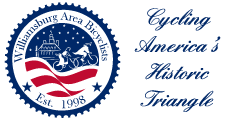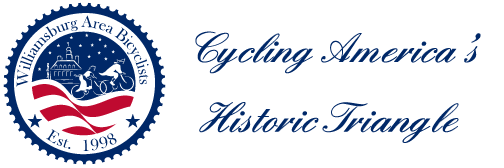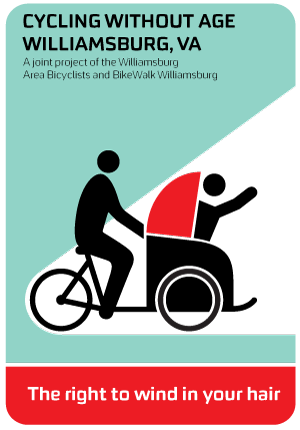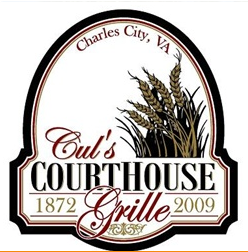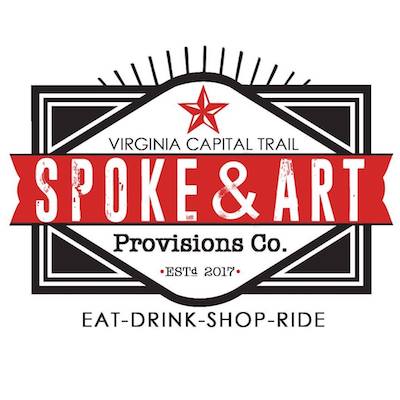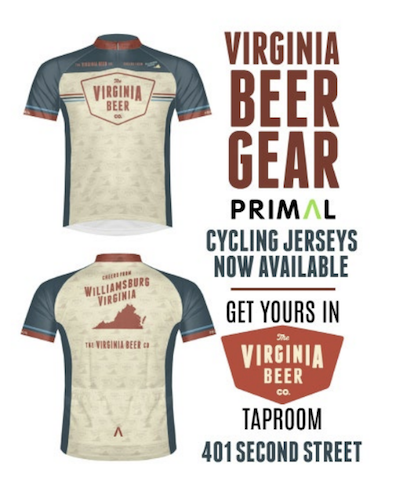SAFETY AND COURTESY IN GROUP BICYCLE RIDES
This document was compiled by WAB member Kevin Drawbaugh - thanks Kevin!
Before the ride …
- Designate a ride leader. Count riders and recount periodically enroute.
- Encourage hand signals and verbal callouts of hazards.
- Agree on route, approximate pace, rest stops, drops or no-drops.
- Agree on pace line approach.
- Share info on potential road conditions and hazards ahead.
- Switch on safety lights and bike computer. Roll out smiling!
Group ride communications …
- Hand signals:
- Right turn = Right arm outstretched. Any turn should be signaled by the front rider and others 15 seconds before the turn and again just before it.
- Left turn = Left arm outstretched.
- Hazard on road (pothole, bump, glass, branches, roadkill, other debris) = Arm outstretched, index finger pointed down at hazard.
- Gravel = Arm outstretched, all fingers spread out and wiggling.
- Slowing = Right arm outstretched, palm facing back and down in a patting or dribbling motion.
- Move left (to avoid pedestrian, cyclist or obstacle ahead = Right arm wrapped around lower back, index finger pointing left.
- Rolling off pace line lead = Right fist taps thigh or right elbow flicks out.
- Need space to join pace line = Right arm extended and finger pointed into pace line by someone not in the line seeking to get in it.
- Mechanical trouble or flat tire, go around me = Raised hand.
- Verbal callouts (spoken loudly so group can hear):
- Car up = vehicle approaching ahead.
- Car back = vehicle approaching from behind.
- Car passing = prepare for vehicle to pass us.
- Car left, car right = vehicle ahead on left or right.
- Slowing = I’m slowing down, for whatever reason.
- Stopping = I’m stopping.
- Left or right turn = Be ready for me to turn.
- Gravel = Beware of gravel on road surface ahead.
- Rolling = I’m proceeding because it looks safe to me. This is better than “clear.” Each rider must decide for themselves if it is safe to proceed.
- Take the lane = Move carefully into the center of the traffic lane, with the group, usually ahead of an intersection or a turn.
- Hole = Beware of pothole or similar road surface hazard ahead.
- Dog = Beware of man’s best friend, unleashed and chasing the group. The loud ones usually are harmless; the grim, quiet ones often mean business.
- Flat = Tire is flat and I need to stop for repair.
- Walker or runner up = A pedestrian or jogger is ahead, moving in either direction. Prepare to go around if the group is overtaking.
- Rider up = Another cyclist is ahead, moving in either direction. Prepare to go around if it is a slower cyclist being overtaken.
- Passing on your left = Spoken when overtaking and passing anyone.
Group rides generally …
Communicating by hand and verbally is a major job for the rider in the front of the group. Others should join in, but it’s not necessary for everyone to always signal or call out a hazard. It’s also not necessary to call out or signal every small crack in the pavement, or a problematic condition that continues for a long time. Just make sure enough people call attention frequently enough to important hazards so that everyone knows about them.
Hand signals are good, if they are widely recognized, but any hazard that may cause a crash should be loudly called out by the first person to recognize it.
Follow bike traffic laws. Ride on the right side of the road, but don’t hug the curb or the pavement edge because that reduces your visibility to motorists. They are supposed to give you three feet of clearance. Make that possible for them whenever possible.
When vehicles are present, ride single file and stop at intersections. When riding on a street where you are keeping up with traffic or where traffic is stopped, “take the lane,” especially before a turn. This means riding in the center of the lane where you will be clearly seen by motorists and can signal your intentions to them.
Avoid angering motorists. Some of them already dislike us, for reasons we don’t really understand. So, don’t flip them off or provoke them. If a motorist appears to stop to let you pass, make eye contact and be sure of their intentions. If all is well, give a friendly wave.
Pass bikes, pedestrians and motor vehicles on the left. Before you do, say loudly but politely, “passing on your left.” Don’t pass on the right if you can avoid it.
Don’t wave at cars to indicate they may pass. That’s their decision, not yours. Hand signal lane changes or turns to vehicles several times before making your move.
Always yield to and avoid alarming pedestrians, children and animals. If a dog chases you, pedal hard and bark back. If Fido is too fast, stop, put the bike between you and the dog.
If your group is not riding in an organized way, it may be in a loose jumble known as a peloton. Try to stay in the front ranks of a peloton; it’s safer. If you must stop, move your bike and yourself completely off the road. Leaving a ride. If you plan to quit, tell the ride leader.
Pace line safety …
The big plus to group riding is pace line drafting, where one rider leads the pack by pedaling into the wind. This allows others to sit in line behind the leader’s wake. This practice can reduce drag by 50 percent, letting everyone ride faster and farther with less work. To share the extra effort required of being in the front, riders take turns being the leader.
The big minus to the pace line is reduced visibility. It’s hard to see approaching obstacles when you’re tucked in behind the rider ahead. For this reason, safe group rides require constant communication and a basic understanding of pace-line etiquette and bike-handling skills. Everyone needs to understand these issues and participate.
Riding at the front of the paceline is called pulling. Typically, you pull for a few minutes. When you’re done, signal that you’re rolling off. Tap your right leg with your fist or flick your elbow. Then, after checking for traffic on your left, steer off the front to the left. The rider behind you will move up and take over the pull. After this happens, you drift smoothly to the back of the pace line and reenter the draft behind the last rider in the group.
Pace line pro tips for everyone …
- Hold your line. Don’t swerve unexpectedly. Keep your gaze ahead of you and your handlebars steady. Even when talking with another rider, avoid turning your head.
- Get a rear-view mirror and use it. If you must look back, do it with only your head.
- Maintain a steady pace. Avoid sudden accelerations and decelerations.
- Don’t slam on your brakes if you can avoid it.
- Avoid half-wheeling. When riding next to someone, try to keep your handlebars in line. When riding behind someone, avoid overlapping wheels with them.
- Keep a safe distance. Don’t ride any closer to someone’s back wheel than you feel is safe. Assess the skills and experience of the rider ahead and adjust spacing as needed.
- Monitor wind conditions. In a crosswind, you can save energy by drafting in an “echelon” slightly to the left or right of the rider ahead, but avoid overlapping wheels.
- Always stay attentive, with your hands near your brakes.
- Try to keep pedaling. The buzz of a coasting freewheel hub suggests to trailing riders that a rider ahead is slowing and they should, too. This worsens the “accordion effect,” causing the pace line to slow and speed up intermittently for no good reason.
- Don’t use aerobars when riding in tight formation. They greatly reduce steering control.
- Don’t snot-rocket or spit on your friends. If you must expectorate, look before launch.
- Some riding groups naturally divide into fast and not-so-fast. That’s okay, if everyone knows this may occur. If it does, hang with the hitters as long as you can, but don’t be embarrassed about fading back if you need a breather. Also, group ride best practices are not set aside during KOM sprints.
Pace line pro tips for the puller …
Riding in front is harder than sitting back in the pack, especially at high speed or into a headwind. Rotating into the puller spot can be a rude surprise on a blowy day. Brace yourself.
However, don’t overdo it by surging into the pull with a sudden jump in pace, which may annoy others. Keep the pace smooth through the transition from one puller to the next.
Once you’ve settled into the front, keep things steady and avoid unexpected changes in pace. Resist the temptation to surge up ascents. Let the speed drop a bit while going uphill.
How long you stay at the front depends on group dynamics and your ability. Generally, the faster the group, the shorter the pulls, but monitor how you feel. You need to save enough energy to catch back onto the paceline after rotating off, as well as to pull again later. Every group ride has its own standards, but there’s no shame in pulling for a shorter time than others.
While at the front, you are responsible for picking a safe path for the group around obstacles and through traffic. Keep your eyes on the road. Clearly hand signal and call out upcoming hazards or pace changes. At traffic lights, determine if a full stop is needed, based on whether everyone will be able to get through a green light before it changes to red.
When you peel off the front and fade back to the tail, it can take a lot of work to get back into the draft and cruising, especially if you drift back too quickly or if the next puller cranks up the pace. This little effort can easily put you over the limit if you’ve just taken a hard pull. It’s one of the most common moments for riders to get dropped. When you’re pulling, save something in your legs for the effort of catching back on.
Pace line cornering and descents …
Riding in a paceline on straight, level terrain is comparatively easy. Turns and hills can be a challenge, especially for less-experienced riders.
In corners, follow the line and speed of the riders in front of you. Pay attention to hand signals and verbal callouts for slowing or gravel. If you must brake for a turn, do it before you get there. Then you can smoothly enter the turn and carve a safe arc through it.
Riders farther back in the pack must brake harder before the turn than the first riders to enter it, due to the accordion effect. So, shift into an easier gear before entering the turn. That way you’ll be able to accelerate and get back up to speed more quickly afterward.
When the group encounters a descent, riders farther back will accelerate more quickly than those ahead due to the draft advantage. Everyone should play it safe on downhills when speeds rise. Don’t draft tightly. Open space around you on all sides. Don’t worry about keeping up. As the group reaches the bottom, the paceline will naturally come back together.
